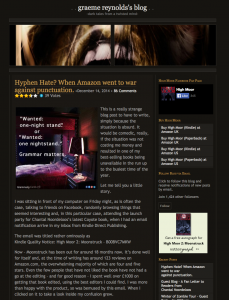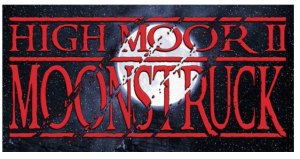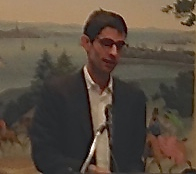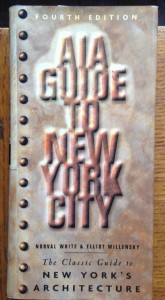The European Union & Privacy Matters
/0 Comments/in Media, Blogging, Internet, Technology, Science & Computers /by Philip TurnerI don’t know how many readers I have that live in the EU, or are EU subjects, but I know that the international body is installing new requirements about safeguarding web users’ information, so whether you EU readers are one or many, this statement is for you, and really for anyone concerned about their privacy and personal information.
I
I don’t have any data harvesting software that picks up people’s info, even when they don’t leave it deliberately.
II
If you choose to subscribe to my blog—which you can do by clicking through to “Get New Posts By Email on the right-hand rail adjacent to this post—that just means you get an email announcing each new post I publish, but my referral system doesn’t do—and will never do anything—with your email address, other than to automatically send you the new posts.
III
If I ever were to email you directly and personally it might be to announce something major, like the creation of a wholly new blog, but not randomly or incessantly.
IV
If you happen to subscribe to this blog, or to my other site, Honourary Canadian: Seeing Canada from Away, thanks for doing that. But whether you do,or not, I promise to keep your data away from any commercial users. Thanks most of all for reading The Great Gray Bridge and Honourary Canadian.
For more information, please visit this page.
Keeping Up with Editorial Work & the News, or Trying To
/0 Comments/in Media, Blogging, Internet, News, Politics, History & Media /by Philip TurnerI believe today is the most I’ve ever felt that I have far, far more on my plate than I can read for work—which is reading and editing book proposals and manuscripts— plus what I feel compelled to read and follow of current events, politics, and news. “What’s going on,” indeed, as the Marvin Gaye song goes. Also, I work on a lot of current affairs and topical nonfiction material, and blog here about the news—if less than usual of late—so all those paths meet and cross in me.
I just finished reading Jane Mayer’s impressive New Yorker article out today, “Donald Trump’s Ghostwriter Tells All,” the inside story of Tony Schwartz, who was hired to write Trump: The Art of the Deal, Trump’s first book, which was published by Random House in 1992. Schwartz massively regrets doing his job too well, by making the putative author much more appealing than he really is. It’s possibly the single most devastating indictment of Trump I’ve read. Period. That’s why I’m sharing it here.
Now back to reading and editing the introduction to a new anthology of horror literature from America’s Colonial times that I’m going to be representing as literary agent. It will feature great authors from the 17th and 18th centuries who wrote then in an emerging horror genre. The subject seems pretty apt for the moment, right?
The Ravishing Music of Ralph Vaughan Williams, Good for the Holidays and all Through the Year
/1 Comment/in Media, Blogging, Internet, Music, Bands & Radio /by Philip Turner My wife and I don’t listen to the music of Ralph Vaughan Williams (1872-1958) only during Christmas season, though this is a particularly good time to do so, since a great deal of his output is connected to the annual fest. In fact, on Dec 25th 2013, I shared about the British composer in this appreciative post. Over a prodigiously productive career that included nine symphonies, RVW discovered and wrote a banquet of ravishing choral music, folksong cycles, smaller chamber and symphonic works, and more, lots of it in the idiom of British folk melodies, much of which he gathered and notated in the field from nonprofessional musicians and singers, while also traveling with early recording equipment, which he used to gather direct sound.
My wife and I don’t listen to the music of Ralph Vaughan Williams (1872-1958) only during Christmas season, though this is a particularly good time to do so, since a great deal of his output is connected to the annual fest. In fact, on Dec 25th 2013, I shared about the British composer in this appreciative post. Over a prodigiously productive career that included nine symphonies, RVW discovered and wrote a banquet of ravishing choral music, folksong cycles, smaller chamber and symphonic works, and more, lots of it in the idiom of British folk melodies, much of which he gathered and notated in the field from nonprofessional musicians and singers, while also traveling with early recording equipment, which he used to gather direct sound.
In the early decades of the twentieth century there were other song collectors doing similar work in Britain (Cecil Sharp and others) and in North America (Alan Lomax, John Cohen). And, twentieth century composers in other lands were also fascinated with borrowing from indigenous musics, like Sibelius did in Finland, Smetana in Hungary, Copland in America, etc. I’ve always been most fond of RVW among this ilk because—though my ethnic roots are all in Eastern Europe—I’m a never-closeted Anglophile, a fan of Gaelic cultures and lover of the highlands and the North, regardless of country and continent. Vaughan Williams also composed modernist, often challenging music, like his Sixth Symphony which includes a passage for saxophone, so to me he never became saccharine or merely stuck in the past. I have many precious LPs of RVW’s, several vinyl sides of which I bought secondhand on my first visit to Britain in 1980 (one of which is pictured here), but this year our turntable is on the fritz, so I’ve gone searching for his music on youtube, and thankfully, I’ve found a very productive rabbit hole over there, just using the search term ‘Ralph Vaughan Williams songs voice‘. One piece in particular that we adore is “Five Variants of ‘Dives and Lazarus,'” from a New Testament source, which I’ve found in an orchestral version and a version sung by Maddy Prior, longtime member of the British folk revival group of the 1970s, still going strong, Steeleye Span. In the sung version, I appreciate the combination of lyrics oriented toward the sacred, and those about meat and drink and other earthly pleasures. At this link, you may listen to the orchestral version and prepare to have your ears caressed for 13 minutes, and follow the suspense of the biblical tale in the sung version.
Editorial Humor for Hump Day, Only This is No Joke
/0 Comments/in Books & Writing, Media, Blogging, Internet /by Philip Turner A fussy and censorious reader objected to the use of hyphenated words in High Moor II: Moonstruck, a novel for sale on Amazon written by UK author Graeme Reynolds. Amazon, which likes to trumpet how customer-focused they are, jumped at the complaint and ran a spell check on the book. Finding more than 100 hyphenated words in the 90,000 word ms, which they apparently found excessive, they instructed Reynolds to re-edit the Kindle edition of the book, lest it be removed from sale. Not surprisingly, Reynolds was gobsmacked at the absurdity of the situation. He blogged about it in a post titled Hyphen Hate: When Amazon Went to War Against Punctuation (screenshot at left). The book was indeed removed from sale, and the post drew more than 300,000 readers to his site. Amazon evidently thought better of their decision—or didn’t want more negative publicity—and they reinstated Reynolds’ novel. Via this link you can listen to an interview with the author on CBC’s As it Happens, and ponder Amazon’s ridiculous policies.
A fussy and censorious reader objected to the use of hyphenated words in High Moor II: Moonstruck, a novel for sale on Amazon written by UK author Graeme Reynolds. Amazon, which likes to trumpet how customer-focused they are, jumped at the complaint and ran a spell check on the book. Finding more than 100 hyphenated words in the 90,000 word ms, which they apparently found excessive, they instructed Reynolds to re-edit the Kindle edition of the book, lest it be removed from sale. Not surprisingly, Reynolds was gobsmacked at the absurdity of the situation. He blogged about it in a post titled Hyphen Hate: When Amazon Went to War Against Punctuation (screenshot at left). The book was indeed removed from sale, and the post drew more than 300,000 readers to his site. Amazon evidently thought better of their decision—or didn’t want more negative publicity—and they reinstated Reynolds’ novel. Via this link you can listen to an interview with the author on CBC’s As it Happens, and ponder Amazon’s ridiculous policies.
Helping People Feel Better During a Lousy Week
/0 Comments/in Media, Blogging, Internet, News, Politics, History & Media /by Philip Turner A Facebook post of mine that I published this past Thursday night, Nov 19, is having a very wide popularity, more than I anticipated when I put it up. I was inspired to share by Farzin Yousefian and Samantha Jackson, the Toronto couple pictured here who, before their recent marriage, decided to donate to a charity the money they’d up till then been planning to spend on a big wedding reception—enough money to sponsor a family of four Syrian refugees in Canada for one year. It’s had more than 800 1000 people ‘like’ it on Facebook, with 150 shares, from among my Facebook friends, of course, but also by people I don’t know. That’s because I choose to label my posts as ‘Public’ on Facebook, and not just for ‘Friends.’ Meantime, a bit.ly link I’d created from the CBC.ca News article about their generosity, which I used to make the post, has been passed along nearly 1,500 more than 2,000 times Friday as of Sunday night. It’s elicited many kind comments, and one bigoted hater, whom we as a group rebutted and rebuffed. I see the reception for the post as a good-news story about a truly feel-good story, amid a week when so much malevolent violence and xenophobia was coursing through tmany countries, including the US and Canada.
A Facebook post of mine that I published this past Thursday night, Nov 19, is having a very wide popularity, more than I anticipated when I put it up. I was inspired to share by Farzin Yousefian and Samantha Jackson, the Toronto couple pictured here who, before their recent marriage, decided to donate to a charity the money they’d up till then been planning to spend on a big wedding reception—enough money to sponsor a family of four Syrian refugees in Canada for one year. It’s had more than 800 1000 people ‘like’ it on Facebook, with 150 shares, from among my Facebook friends, of course, but also by people I don’t know. That’s because I choose to label my posts as ‘Public’ on Facebook, and not just for ‘Friends.’ Meantime, a bit.ly link I’d created from the CBC.ca News article about their generosity, which I used to make the post, has been passed along nearly 1,500 more than 2,000 times Friday as of Sunday night. It’s elicited many kind comments, and one bigoted hater, whom we as a group rebutted and rebuffed. I see the reception for the post as a good-news story about a truly feel-good story, amid a week when so much malevolent violence and xenophobia was coursing through tmany countries, including the US and Canada.
I should add I label my posts as ‘Public’ on Facebook, because I don’t fear what other people may say, and I enjoy engaging with the occasional stranger who makes a comment about something I’ve shared, and quite often gain new followers this way. Only rarely does somebody like the hater today crop up. I had an internal debate, and a public one with a few friends on the thread about the bigot, as to whether I would leave up his vile pronouncements, or delete them. In the end, I blocked him, because it became clear he just wanted to fight with me and others on the thread, but I did leave up his remarks, and our rebuttals, as a record of one person’s mindset, and our collective response, in dedication and memoriam to all people suffering in war, especially civilians, non-combatants, who are suffering right now so much, fleeing perilous devastation at home. Thanks to all friends and new people who read the original Facebook post, and this blog post, which is sort of meta to the first. The funny thing is, had I thought of it Thursday night, I might’ve blogged about the couple, and drawn a lot of that traffic to my sites, but I seized on it for Facebook, and am really very glad I did.
Also, please note that friends and readers who want to, may donate to a fund organized by the couple. The money they donated of their own, plus funds from friends and family who followed their directive and contributed have mustered more than $17,000, when $27,000 is needed to settle and shelter a family of four in Toronto for one year. You may follow this link, then look for the drop down menu where it says, “Select a designation for your gift,” and look for “Samantha Jackson & Farzin Yousefian.” I just donated.
Editing NewYorker.com, Once an Upstart, Now a Stalwart
/0 Comments/in Book Biz, Media, Blogging, Internet /by Philip Turner
Occasion was #PublishersLunchClub‘s monthly mtg. @nxthompson told the book ppl @NewYorker‘s site is launching new #BookExcerpts initiative.
— Philip Turner (@philipsturner) November 2, 2015
 I was glad my friend Mildred Marmur asked me to be her guest today for a meeting of the Publishers Lunch Club, held each month at the Yale Club near Grand Central Terminal, on Vanderbilt Ave, one of Manhattan’s shortest avenues. Today’s featured speaker was Nicholas Thompson, the editor of NewYorker.com. He took that job in 2012, after several years as an editor on the print side of The New Yorker. He spoke for about fifteen minutes on the evolution of Web culture at the magazine, followed by a Q&A of about the same duration. Covering what he wittily dubbed the ‘five stages’ in the evolution of the Web at the magazine, Thompson outlined a chronology that began before the magazine even had a website, when many there would rather have not bothered having one, to the point where they slowly began developing a site that didn’t have significant editorial or financial resources assigned to it, and which was publishing a different group of writers than the print side was—contributors who were freelance, not on staff, whose work was not at the same level as the print publication. However, like so much on the Internet, it has grown rapidly, to traffic of 10 million visitors a month, numbers even greater than the number of subscribers to the print magazine, with a budget appropriate to a full-fledged mission, generating lots of revenue for Conde Nast. Now they’re able to foster a unique space on the Web, retaining many of the virtues of the magazine—which still has stories that take many weeks, months, and years to write and edit—and more rapid-response coverage of events in the moment, in Internet posts that may take mere hours, days, and weeks to write and edit.
I was glad my friend Mildred Marmur asked me to be her guest today for a meeting of the Publishers Lunch Club, held each month at the Yale Club near Grand Central Terminal, on Vanderbilt Ave, one of Manhattan’s shortest avenues. Today’s featured speaker was Nicholas Thompson, the editor of NewYorker.com. He took that job in 2012, after several years as an editor on the print side of The New Yorker. He spoke for about fifteen minutes on the evolution of Web culture at the magazine, followed by a Q&A of about the same duration. Covering what he wittily dubbed the ‘five stages’ in the evolution of the Web at the magazine, Thompson outlined a chronology that began before the magazine even had a website, when many there would rather have not bothered having one, to the point where they slowly began developing a site that didn’t have significant editorial or financial resources assigned to it, and which was publishing a different group of writers than the print side was—contributors who were freelance, not on staff, whose work was not at the same level as the print publication. However, like so much on the Internet, it has grown rapidly, to traffic of 10 million visitors a month, numbers even greater than the number of subscribers to the print magazine, with a budget appropriate to a full-fledged mission, generating lots of revenue for Conde Nast. Now they’re able to foster a unique space on the Web, retaining many of the virtues of the magazine—which still has stories that take many weeks, months, and years to write and edit—and more rapid-response coverage of events in the moment, in Internet posts that may take mere hours, days, and weeks to write and edit.
During the Q&A, I asked whether on NewYorker.com they choose to link out to the sites of other publications, something I do freely on my blogs, including in this post. Though not totally predominant on the Web, it is more common than not, in an environment where it often seems that generosity, or a willingness to share, is pretty much the default mode. Thompson explained that linking like this is being discussed at the magazine, but there is reticence due to the fact that The New Yorker‘s standards for fact-checking, both on the print and the Web, are more robust than at other outlets. This accounts for a constituency that believes, since they can’t vouch for the accuracy of the linked material, they should refrain from linking readers to it; moreover, readers who click on links like that do leave the host’s site, and may not return to it, at least for a while. Still, Thompson seemed convinced that NewYorker.com should link freely, saying that readers are not apt to blame The New Yorker for inferior vetting or copyediting of a story published elsewhere. He said at some point they will probably begin doing it, with an appetite for more dynamic SEO being a key reason. He added that now, after several years of The New Yorker publishing on the Web, readers on the site don’t know, and in a focus group that he described amusingly, couldn’t reliably say what started out as a print story, and migrated to NewYorker.com, and what was purely a Web original.
I piped up a second time, asking about what he reads on the Web when he’s not working on the magazine’s site. He immediately lamented the loss of Grantland, a favorite sports site that was shuttered over the weekend, just as the baseball season was ending with the Mets loss in the World Series, a double death for more than a few New York fans in the dining room. Thompson added he reads a lot on Politico, the Washington Post, New York Times, especially in politics and world affairs—subjects that describe a lot of the pieces he personally line-edits, also the subject area I concentrate in most—and about the war in Syria. He seeks out the Twitter hashtag #longreads, the books sub-Reddit, and Longform.
Midway through his talk, Thompson said he had to put in a plug for a new initiative at NewYorker.com—which in front of this book business group qualified as having buried the lede: The website will soon begin publishing book excerpts, this even though, he explained, the print magazine has long mostly eschewed running many of them. He even named the two editors there to whom publishers should submit their candidates for excerpting, so it’s a go, beginning soon. Upon leaving the Yale Club, I quickly put that info in to a tweet (found near the top of this post), as I know many book publicists will be excited about this development. Thompson also spoke briefly about The Atavist, an online-only magazine that publishes longform, interactive journalism, which he helped found. His initial reference to it was brief, so I prompted him to say more, since it’s a site I have enjoyed and recommended since their beginnings around five years ago. He explained that while a book imprint they had for a time was shuttered in 2014, when Barry Diller’s IAC, the main investor in it, pulled out of the venture, the magazine itself is going strong, continuing to publish about one story per month, while a CMS they created, similar to the one they use to publish their own articles, is widely licensed to other Web publishers.
As a writer and publisher of two WordPress blogs of my own, I find the Web to be a fascinating domain to inhabit professionally. I’m glad I can be a book editor, and a Web editor, somewhat congruous with The New Yorker‘s evolution in to magazine and website. The New Yorker’s embrace of the Web, reluctant at first, but soon all-in, made for an excellent, thought-provoking discussion. Glad I could join many publishing colleagues there. I’ll continue keeping my eye on NewYorker.com, for enjoyment of good up-to-the-moment writing.
*I began The Great Gray Bridge: Spanning urban life, books, music, culture, current events in October 2011 and Honourary Canadian: Seeing Canada from Away in September 2013.
Twilight Cruise on the Hudson and NY Harbor
/0 Comments/in Media, Blogging, Internet, Urban Life & New York City /by Philip Turner My sister Pamela and her good friend Billy visited NY the past couple days, and last evening she took us on a Classic Harbor Line cruise in NY harbor with an AIA-certified guide, Scott Cook, who spoke very knowledgeably about NY buildings and the Manhattan, Brooklyn, and NJ waterfronts. It was far superior to NY’s more well-known and trafficked Circle Line! The docent Cook, one of six architecture professionals who work these cruises for Classic Harbor, was very good, a fluent speaker, quick to deliver interesting information on individual buildings, their locations, the architects responsible for them, and details of their design and especially their ‘green’ features. He described NY’s waterfront as our “sixth borough,” an idea that really appeals to me, and he broached urban issues, from climate change to how the Hudson River Park and Brooklyn Bridge Park are permitting high-rise development in exchange for resources for upkeep of these newly created public spaces.
My sister Pamela and her good friend Billy visited NY the past couple days, and last evening she took us on a Classic Harbor Line cruise in NY harbor with an AIA-certified guide, Scott Cook, who spoke very knowledgeably about NY buildings and the Manhattan, Brooklyn, and NJ waterfronts. It was far superior to NY’s more well-known and trafficked Circle Line! The docent Cook, one of six architecture professionals who work these cruises for Classic Harbor, was very good, a fluent speaker, quick to deliver interesting information on individual buildings, their locations, the architects responsible for them, and details of their design and especially their ‘green’ features. He described NY’s waterfront as our “sixth borough,” an idea that really appeals to me, and he broached urban issues, from climate change to how the Hudson River Park and Brooklyn Bridge Park are permitting high-rise development in exchange for resources for upkeep of these newly created public spaces. 
The docents have to be quick because the boats of Classic Harbor are so-called ‘motor yachts,’ and they cruise at quite good speed. The vessel we sailed on was the Manhattan II, nicely appointed with teak and mahogany and lots of clean, clear wrap-around glass. Inside was a lounge with many comfortable seats at wide tables, quite a roomy space. The copy on the brochure and map they handed out (pictured below) suggests that these NY Harbor cruises are the least crowded of all the lines offering these boat rides, and I believe it—nothing at all like being on the subway, an unfortunately apt comparison for the ride I took a couple years ago on the Circle Line. Out on deck there’s some bench seating, and enough room to walk and stand comfortably, though carefully, leaning on rails and holding on to pieces of the ship. The captain was a rather young mariner, who helmed the yacht very ably, coming to a floating rest a number of times, near the Statue of Liberty, the shore of Governors Island, the Brooklyn and Manhattan Bridges, and Battery Park City. Figured in to the price of a ticket is a free drink, so Kyle and I welcomed the discovery that Yuengling’s light beer is very drinkable!
A coincidental sidelight made me eager to go on this tour: when I was executive editor with Times Books at Random House in the late ’90s, I acquired, edited, and published the 4th Edition of the AIA Guide to New York City, an essential handbook that has been published continuously since 1967, with a new edition out roughly every decade. The edition I published—by architect and pithy writer about buildings and public spaces Norval White—included entries on more than 5,000 of the metropolis’s buildings in all five boroughs, a book I still treasure.
I hope at some point to take Classic Harbor Line’s cruise that circumnavigates all of Manhattan, a three-hour trip, twice the duration of the trip we took Sunday night. Given my personal interest in the GWB, aka The Great Gray Bridge, and The Little Red Lighthouse, I’m sure I will enjoy that tour even more. Here are lots more of my pictures, with commentary in the captions, though it’s a dead certainty I’ll come nowhere recalling most of the buildings and architects that Scott Cook named, but the day was so clear with abundant light, I think you’ll be able to appreciate many of the views and buildings anyway.
